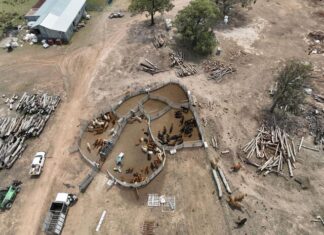 Reconstruction at Cunningham’s Gap has reached a major milestone with work now complete at 10 of the 11 sites damaged in last summer’s disasters.
Reconstruction at Cunningham’s Gap has reached a major milestone with work now complete at 10 of the 11 sites damaged in last summer’s disasters.
Main Roads Minister Craig Wallace said a lot of hard work had been carried out on the range crossing between then and now.
“More than 200,000 man hours have gone in to reconstructing the 10 damaged sections to make them safer, stronger and more resilient to extreme weather,” Mr Wallace said.
“Works included excavating the embankments and reinforcing the road with soil nails and piles, and the embankments were then rebuilt with more than 16,500m3 of rock fill,” he said.
“The Gap sustained major damage during the last wet season but our works have created a more stable and resilient foundation for the road.
“Works at the last three sites, Fig Tree Gully, Six Penny Gully and Fig Tree Gully West, wrapped up recently after persistent wet weather at the end of last year unfortunately caused delays.”
Mr Wallace said final asphalt repairs and resurfacing along the length of the Gap will be completed by the end of the month, weather permitting.
“This will allow traffic to flow freely along two lanes through the Gap without 24-hour stop/go traffic control,” he said.
“Work at the Gap’s worst disaster affected and final site at Clayton’s Gully is scheduled to start by the end of the month, with work expected to be completed mid year.
“A brand new 600-metre long section of four-lane highway will be built, cutting in to the slopes of Cunningham’s Gap and bypassing Clayton’s Gully.
“We needed a whole new road design after a massive land slide caused an embankment failure of two metres and left a potential sinkhole 50 by 80 metres.
At least $40 million has been committed to the reconstruction at Cunningham’s Gap and work is being under the Natural Disaster Relief and Recovery Arrangements (NDRRA), a joint federal and state initiative.
Under these arrangements, the Australian Government provides 75 per cent of the funding, with 25 per cent from the Queensland Government.
The 11 reconstruction sites:
1. Top of the Gap (landslip with topsoil and vegetation falling away below the road surface); embankment stabilised using 129 permanent soil nails following topsoil and vegetation falling away.
2. 15 metres from the top of the Gap (cracks and changes to road surface in east bound lane); embankment stabilised with 555 soil nails and rebuilt with rock fill.
3. Slope 150m from the top of the Gap (cracks and changes to road surface in the east bound lane); embankment rebuilt with rock fill.
4. Slope 300m east of Gap Creek Bridge (cracks and change to road surface in road shoulder and east bound lane); embankment stabilised with 134 soil nails and rebuilt with rock fill.
5. West of Fig Tree Gully (cracks and changes to road surface in east bound lane); embankment stabilised with 216 soil nails and rebuilt with rock fill.
6. Fig Tree Gully (cracks and changes to road surface across all lanes); new retaining structure including 40 piles and 40 rock anchors to stabilise the road.
7. West of the truck rest bay (landslip below the road surface); embankment rebuilt with rock fill.
8. Clayton’s Gully (cracks and changes to road surface due to embankment settlement across three of the four lanes); realignment due for construction in early 2012.
9. Six Penny Gully (cracks and a drop in the road surface across two of four lanes); embankment rebuilt with rock fill.
10. West of Stockpile site, 1200 metres east of the helipad (landslip below the road surface); embankment rebuilt with rock fill.
11. National Trail, 600 metres east of the Helipad (signs of road surface damage caused by heavy rainfall); embankment rebuilt with rock fill.
Get the latest news to your email inbox FREE!
REGISTER




